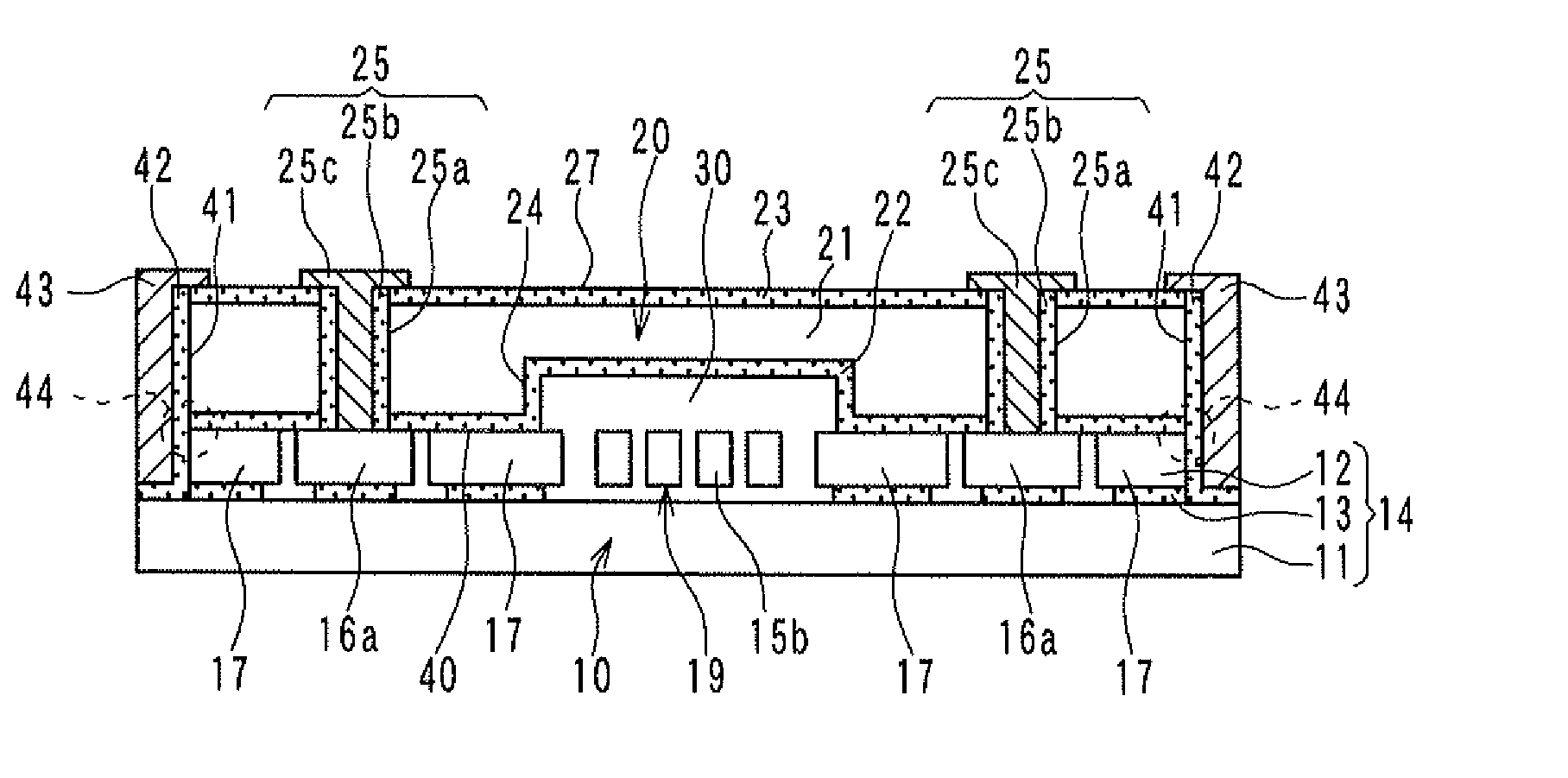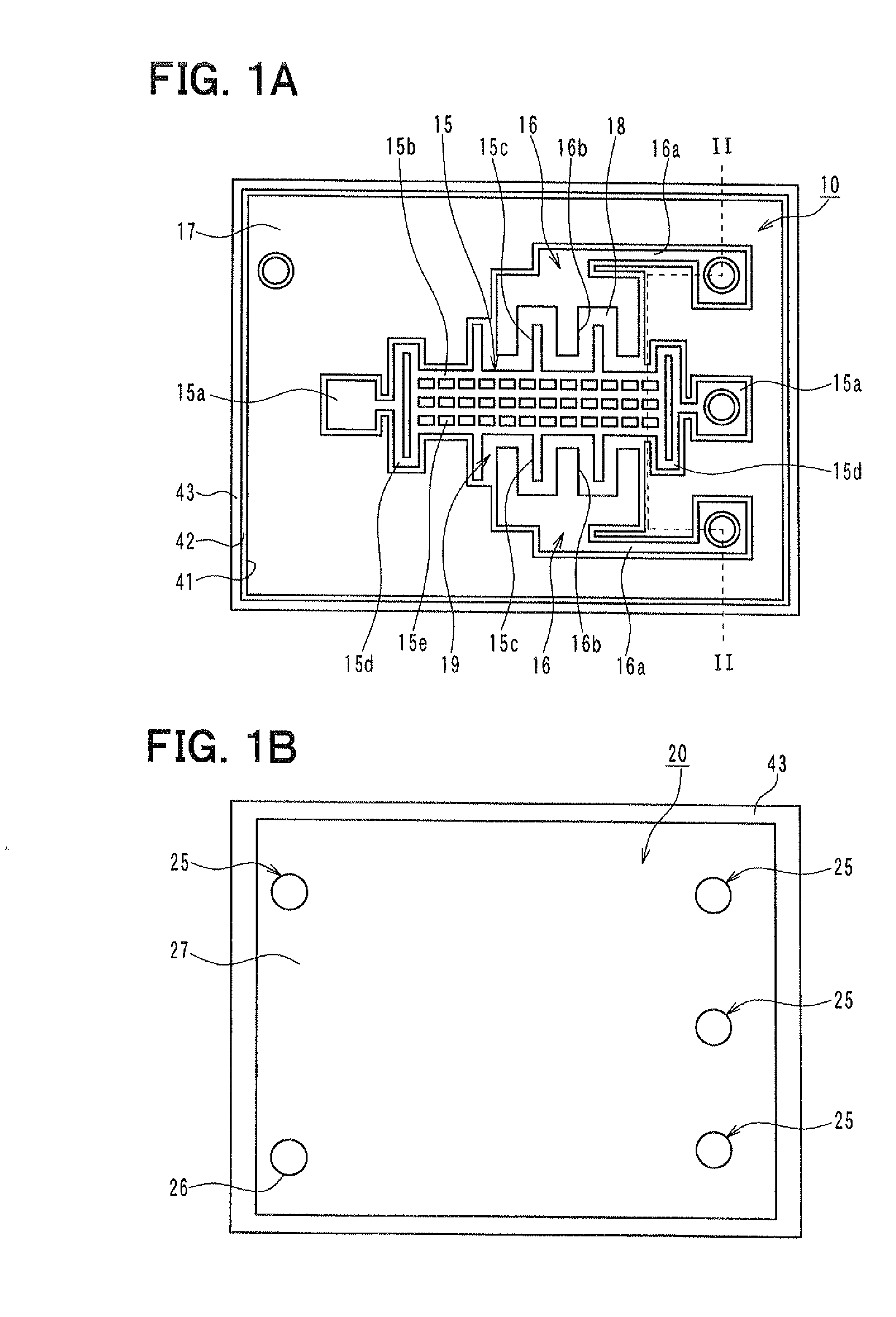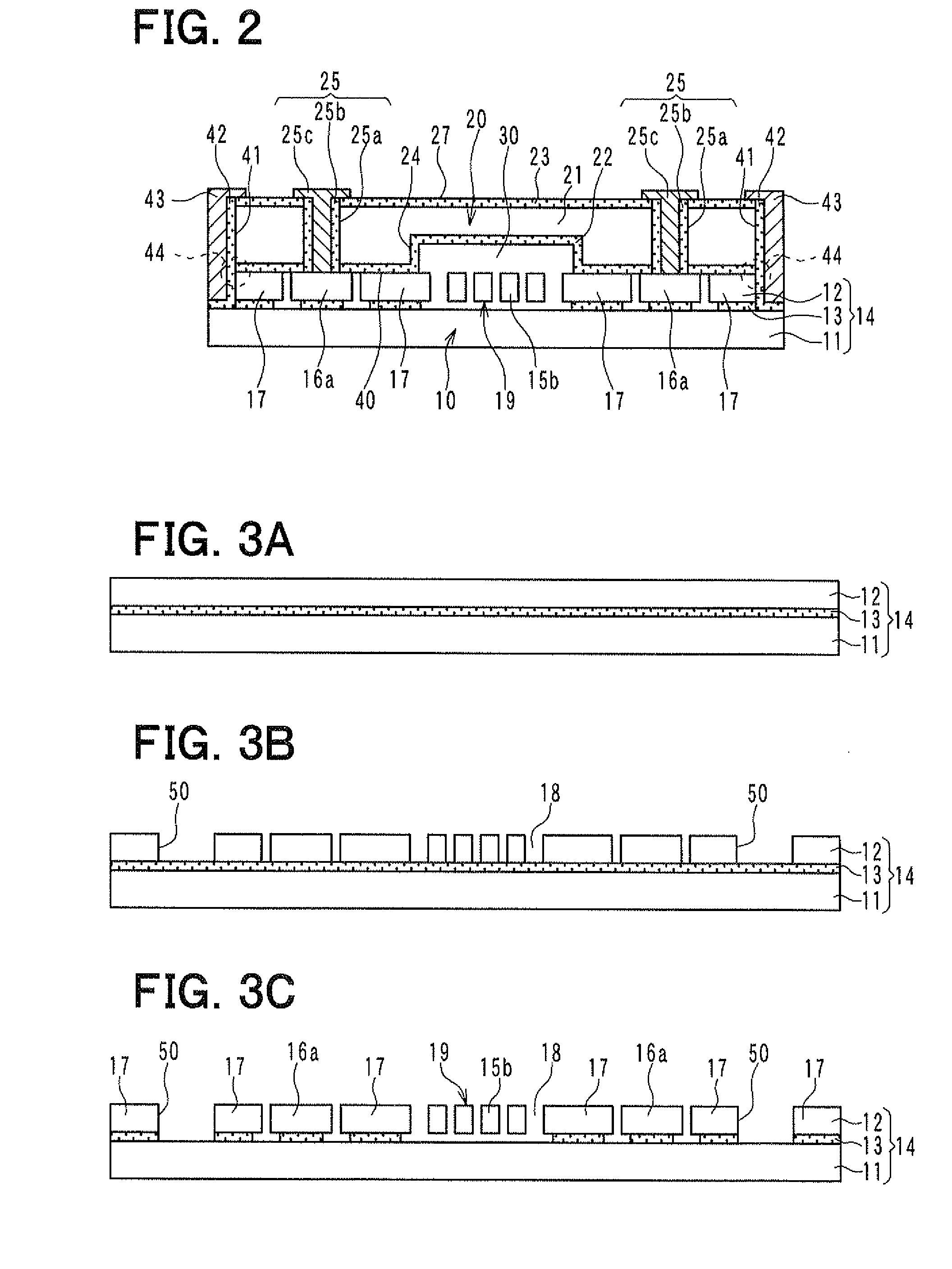Semiconductor device and method of manufacturing the same
a semiconductor and semiconductor technology, applied in the field of semiconductor devices, can solve problems such as weakening of bonding force, and achieve the effect of preventing a reduction of bonding for
- Summary
- Abstract
- Description
- Claims
- Application Information
AI Technical Summary
Benefits of technology
Problems solved by technology
Method used
Image
Examples
first embodiment
[0038]A semiconductor device according to a first embodiment of the present invention is described below with reference to FIGS. 1A and 1B, and FIG. 2. For example, the semiconductor device can be a dynamic quantity sensor having a movable portion such as an acceleration sensor for detecting an acceleration of a vehicle.
[0039]Referring to FIG. 2, the semiconductor device includes a sensor section 10 and a cap section 20 that are stacked on top of each other. FIG. 1A is a plan view of the sensor section 10. FIG. 1B is a plan view of the cap section 20. FIG. 2 is a cross-sectional view of the semiconductor device taken along the line II-II in FIG. 1A.
[0040]Firstly, the sensor section 10 is described. The sensor section 10 is configured to detect a physical quantity such as an acceleration. As shown in FIG. 2, the sensor section 10 is based on a silicon-on-insulator (SOI) substrate 14 including a supporting substrate 11, a semiconductor layer 12, and a sacrificial layer 13. The sacrifi...
second embodiment
[0105]A semiconductor device according to a second embodiment of the present invention is described below with reference to FIGS. 7A, 7B, and 8. A difference between the first and second embodiments is as follows. In the first embodiment, the stacked wafer 52 is diced into individual semiconductor devices by dicing the insulation layer 42 and the metal sealing layer 43. In contrast, in the second embodiment, the stacked wafer 52 is diced into individual semiconductor devices by dicing a portion outside the insulation layer 42 and the metal sealing layer 43.
[0106]FIG. 7A is a plan view of a cap section 20 of the semiconductor device according to the second embodiment, and FIG. 7B, corresponding to FIG. 2, is a cross-sectional view of the semiconductor device according to the second embodiment.
[0107]As shown in FIG. 7B, the recess 41, the insulation layer 42, and the sealing metal layer 43 are located closer to the center of the semiconductor device than the side surface of the semico...
third embodiment
[0111]A semiconductor device according to a third embodiment of the present invention is described below with reference to FIG. 9. FIG. 9, corresponding to FIG. 2, is a cross-sectional view of the semiconductor device according to the third embodiment. A difference between the third embodiment and the first embodiment is as follows.
[0112]According to the third embodiment, as shown in FIG. 9, the recess 41 penetrates at least the interface 40 between sensor section 10 and the cap section 20. In other words, the recess 41 is recessed in a side surface 45 of the semiconductor device so that at least the interface 40 between the sensor section 10 and the cap section 20 can be located in the recess 41. The recess 41 can fully surround the side surface 45 of the semiconductor device. Alternatively, the recess 41 can partially surround the side surface 45 of the semiconductor device.
[0113]The sealing metal layer 43 is located in the recess 41 to fill the sealing metal layer 43 so that the ...
PUM
 Login to View More
Login to View More Abstract
Description
Claims
Application Information
 Login to View More
Login to View More - R&D
- Intellectual Property
- Life Sciences
- Materials
- Tech Scout
- Unparalleled Data Quality
- Higher Quality Content
- 60% Fewer Hallucinations
Browse by: Latest US Patents, China's latest patents, Technical Efficacy Thesaurus, Application Domain, Technology Topic, Popular Technical Reports.
© 2025 PatSnap. All rights reserved.Legal|Privacy policy|Modern Slavery Act Transparency Statement|Sitemap|About US| Contact US: help@patsnap.com



